A group tour today, down in the Brecks. The forecast earlier in the week had been for rain all day, but thankfully prospects had improved since then. It was still a rather grey and cloudy day but we just had a short, light shower over lunch, which was perfectly acceptable under the circumstances!
With the possibility that it might brighten up through the morning, we headed out to search for Woodlarks first, but ready to go looking for Goshawks if the weather improved. As we got out of the car, a Redwing was perched in the top of a tall tree and a Nuthatch was piping from the wood opposite.
As we walked in along the ride, we could hear a Yellowhammer singing and we found the male high in another bare tree in a nearby clearing. A female was less obtrusive in a small oak on the side of the path and the bright yellow male flew across to join her. We had a good look at them through the scope.
Walking round the edge of the clearing, we stopped to watch a Green Woodpecker which flew across and landed up in one of the trees over the far side. Suddenly we heard a Woodlark calling behind us and turned to see it had flown up and perched in the tree out in the middle, where the male Yellowhammer had been earlier.
That seemed to be the trigger for a burst of activity from the Woodlarks, as two started singing over the other side. We looked up to see one of the males high overhead, fluttering rounded bat-like wings and short tail, song-flighting. We could hear a second male doing the same, further away. The ringing, slightly melancholic song of the Woodlark is one of the sounds of early spring in the Forest, great just to stand and listen to.
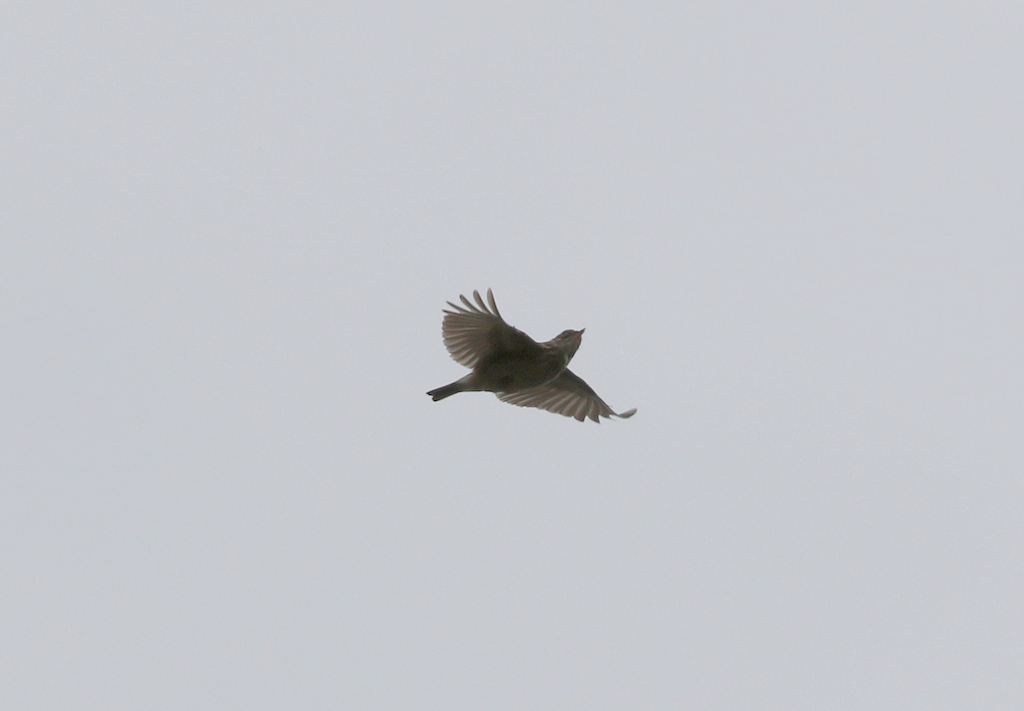
The first Woodlark then started to sing from the tree too. It took off and flew across towards us, landing in a small oak towards the front of the clearing. We had a good look at it through the scope, noting its small crest and well marked pale supercilium. At that point, three Skylarks flew across in front of us too, noticeably longer-tailed than the Woodlarks.
Continuing on to the next clearing, we could still hear Woodlarks singing all around. One flew up from the edge of the path as we approached but disappeared off over the back. We stood and scanned here for a minute – there were several Yellowhammers here too and a couple of Linnet in the hazels on the edge of the grass. Having enjoyed good views of the Woodlarks, and with the weather still looking rather grey, we decided to have a quick look to see if we could find a Willow Tit. We made our way over to another block of forest and walked in along a different ride.
It was rather quiet as we made out way through between the dense blocks of commercial pine plantation, but we did come across a pair of Treecreepers which chased each other round and round the trunks of the trees, stopping occasionally for us to get a better look at them. A Goldcrest was singing from the pines by the path and showed nicely flitting around above our heads.
There are a couple of feeding tables set up here for the tits, and we stationed ourselves overlooking one of them. A steady stream of Blue Tits, Great Tits and Coal Tits was coming in and out all the time. We saw Marsh Tits too and a Nuthatch, but no sign of any Willow Tits. It is not clear how often they visit the feeding stations, but they can sometimes be heard singing or calling in the surrounding trees.
Unfortunately there was very little vocal activity from any of the other tits either this morning, until the weather started to brighten. We hadn’t been looking here too long but we were then torn as to wait to listen for Willow Tits or to head round to look for Goshawks. As the latter was the priority for the day, we decided to head back to the car, briefly distracted by a smart male Yellowhammer perched obligingly in the bushes by the road.
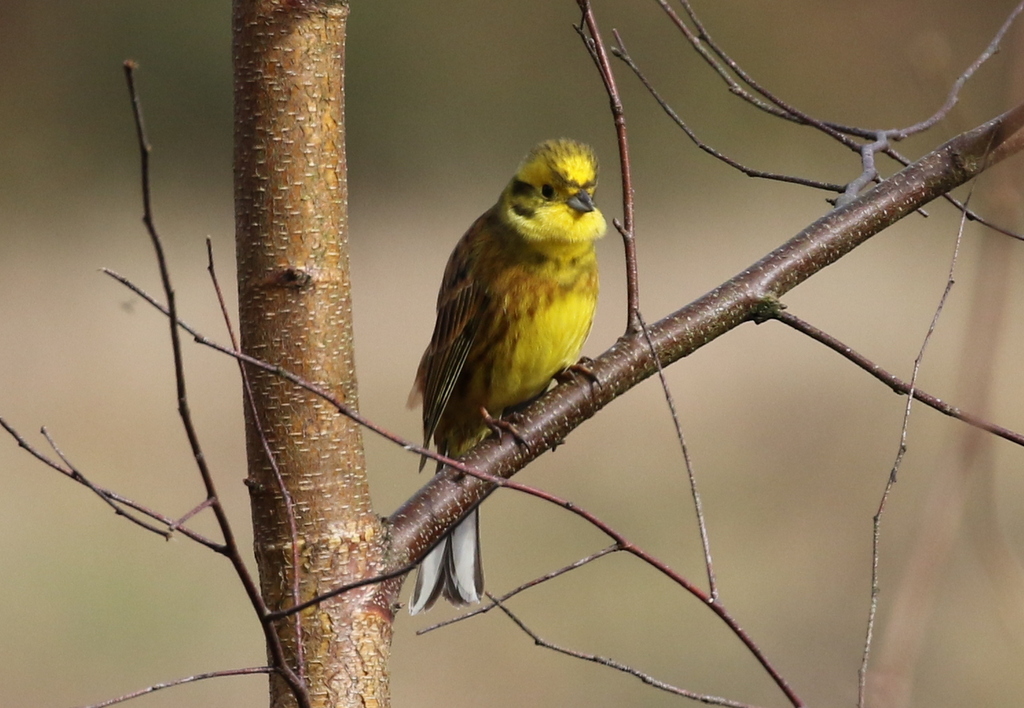
Parking at a convenient location nearby overlooking the forest, we were only just disembarking from the car when we spotted a Goshawk circling behind the tops of the trees. After a hasty exit, everyone managed to get onto the bird in question, although it was only just visible behind the firs. It was a young Goshawk, a juvenile, darker grey-brown above and orangey streaked black below, with very ragged wings.
As the first Goshawk started to circle up a little higher, a second bird appeared. This was an adult and by the looks of it a big female, very pale grey above and appearing almost white below. It was heading over towards the juvenile which was now moving off right as the adult Goshawk started to display, flying after it with deep, exaggerated wingbeats. The juvenile had strayed into its territory and the adult was flying up to see it off.
We lost sight of the two Goshawks behind a line of trees, before the adult appeared again further over. It then launched into a series of rollercoaster display dives, stooping straight down before turning sharply and climbing almost vertically, stalling at the top, before repeated it all over again. It did this several times, gradually losing height before it disappeared down into the trees.

It was very fortunate we had made the decision to come looking for Goshawks when we did. Talking to some other people who were already there, this was the first Goshawk they had seen this morning. It was already clouding over again when we arrived, and the short-lived period of warmer weather had just been enough to stimulate some activity. Rather quickly, it returned to being grey and cooler.
We stayed for a short while to see if the Goshawks might reappear, but there was no further sign while we were there. We did see lots of Common Buzzards circling over the treetops, a couple of Red Kites hanging over the fields behind, and a pair of Kestrels too. A Woodlark was singing in the distance and a little flock of Chaffinches which flew overhead had a couple of Bramblings with them too, although they were hard to pick out in flight.
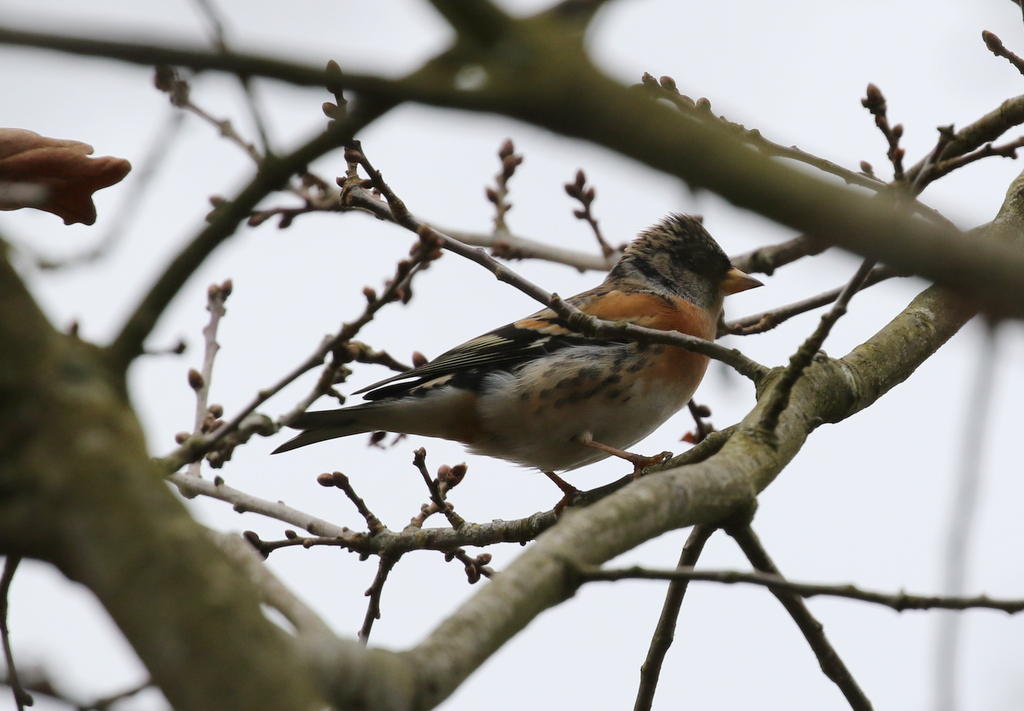
With lots to pack in today, we decided to head off and try something different. We made our way over to Santon Downham and parked in the Forestry Commission car park there. A Goldcrest was singing in the fir trees nearby as we arrived. As we made our way down towards the river, a flock of Redwings and Fieldfares flew over. We stopped briefly to look at the feeders and a smart male Brambling flew up into the tree above our heads, giving us much better views than the flyover earlier.
Down at the bridge, we had a quick scan up and down the river. A pair of Grey Wagtails flew towards us calling and the male landed on a branch overhanging the water, just below the bridge, and started singing. When the female flew on downstream, he followed after her.
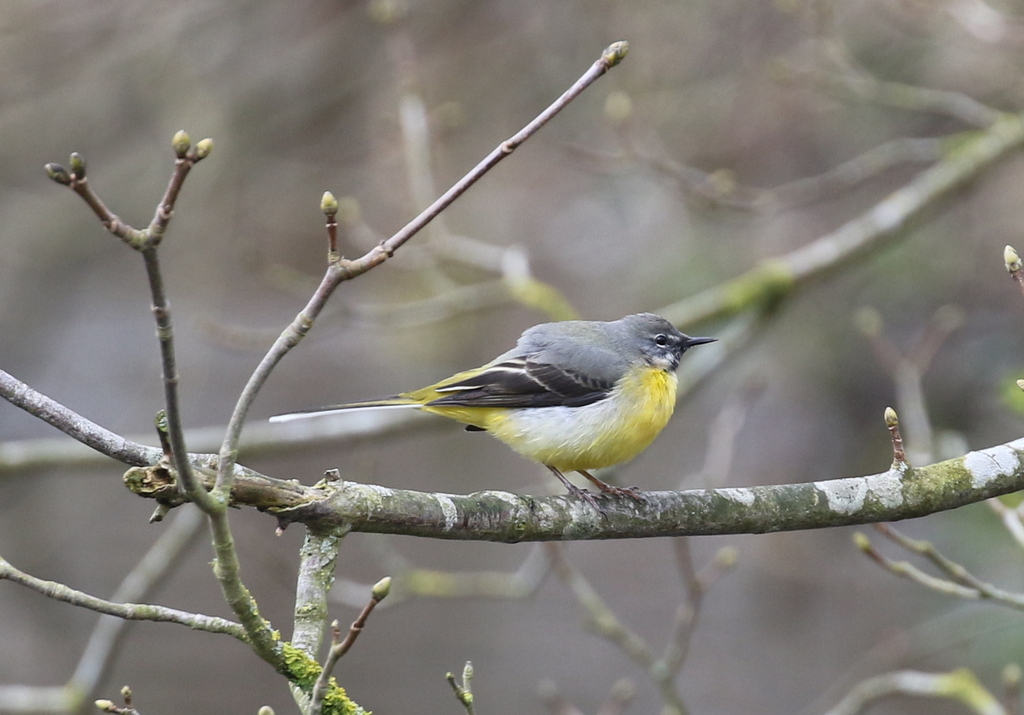
As we made our way down along the path on the riverbank, a Great Spotted Woodpecker flew across and landed in a tree on the other side briefly. A Marsh Tit was singing and there were some Long-tailed Tits in the sallows alongside the ditch, where a Goldcrest had just been bathing and stopped to preen. We could hear another Woodlark singing in the distance.
The poplars by the river were rather quiet today. A Nuthatch flew up and perched above us on one of the trunks and a Treecreeper climbed up past it. We had brought our lunches along with us, and sat on some of the sections of sawn up trunk helpfully left here to eat them. We were hoping we might get lucky and come across a Lesser Spotted Woodpecker here, even though it was not really the best time of day to look for them, but there was no woodpecker activity at all here now.
It started to spit with rain and a brief light shower passed through, thankfully not even enough to get us wet. Once we had finished eating, we started to make our way back. We had a quick look in the poplars the other side of the road too, but a Great Spotted Woodpecker was the only bird calling here. A smart Little Grebe in breeding plumage now showed nicely down on the river, diving repeatedly along the far bank.
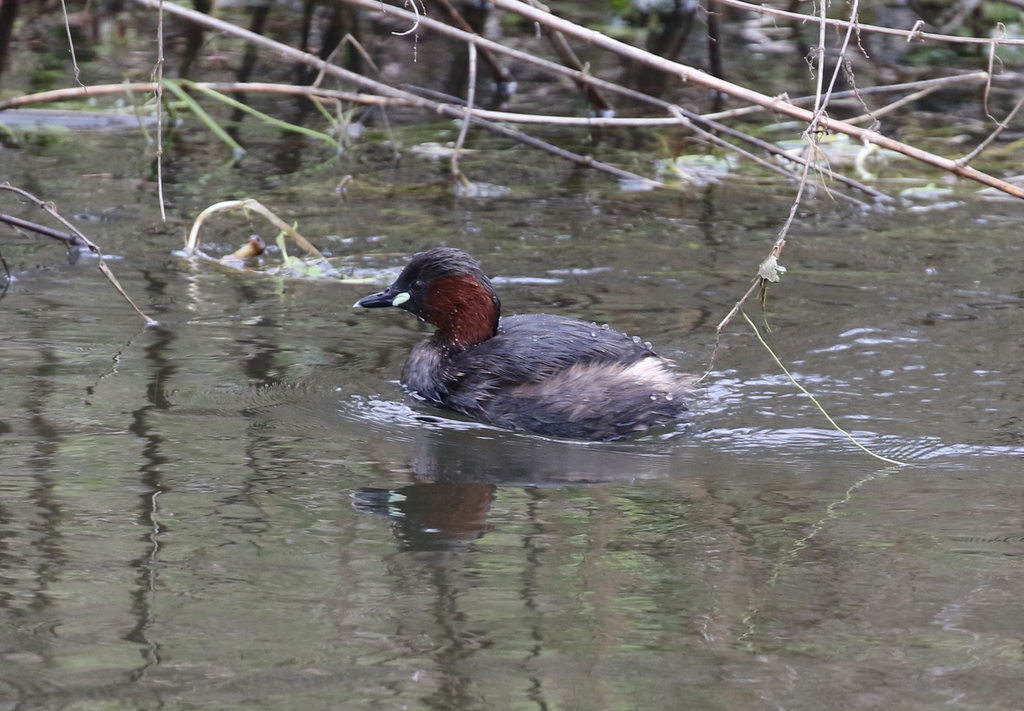
Back in the car, we paid a brief visit to the car park at St Helens. After not being reported since 22nd February, the Parrot Crossbills were apparently seen again yesterday, but it was unclear exactly where and there was no obvious sign of them here. We only spent a few minutes here though and decided not to hang around and to make our way round to Lynford Arboretum, which is where we had planned to spend the rest of the afternoon.
As we walked down the path past the Arboretum, we stopped for a quick look under the beech trees from the gate. There were lots of tits on the cage of fat balls and coming down to the seed spread liberally on the ground. A Nuthatch came down to join them too, but there were only a couple of Chaffinches otherwise here today
Down at the bridge, there was a little bit of seen put out on the pillars already, but we added a generous handful of black sunflower seeds too. There were lots more birds coming and going and we enjoyed great close views of Marsh Tits and Nuthatches in particular here, even though you had to be quick as they darted in, grabbed a sunflower seed or two and zipped off back to the trees repeatedly.
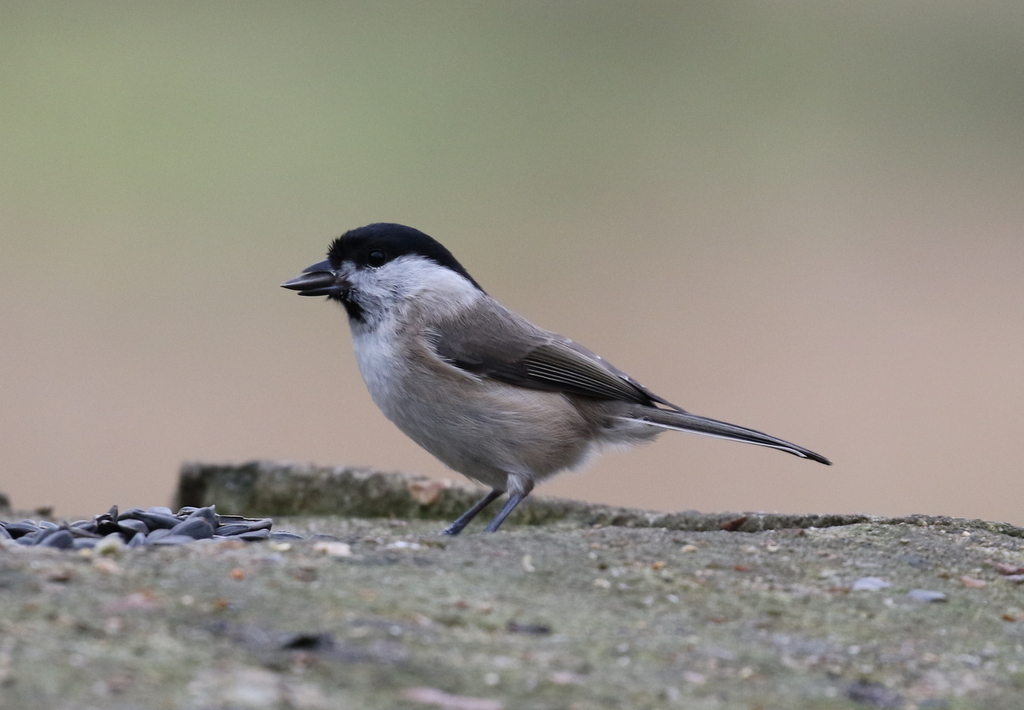
A pair of Reed Buntings kept coming in to the seed at the bridge too and there were lots of Siskins feeding in the alders on either side of the path and down by the lake.
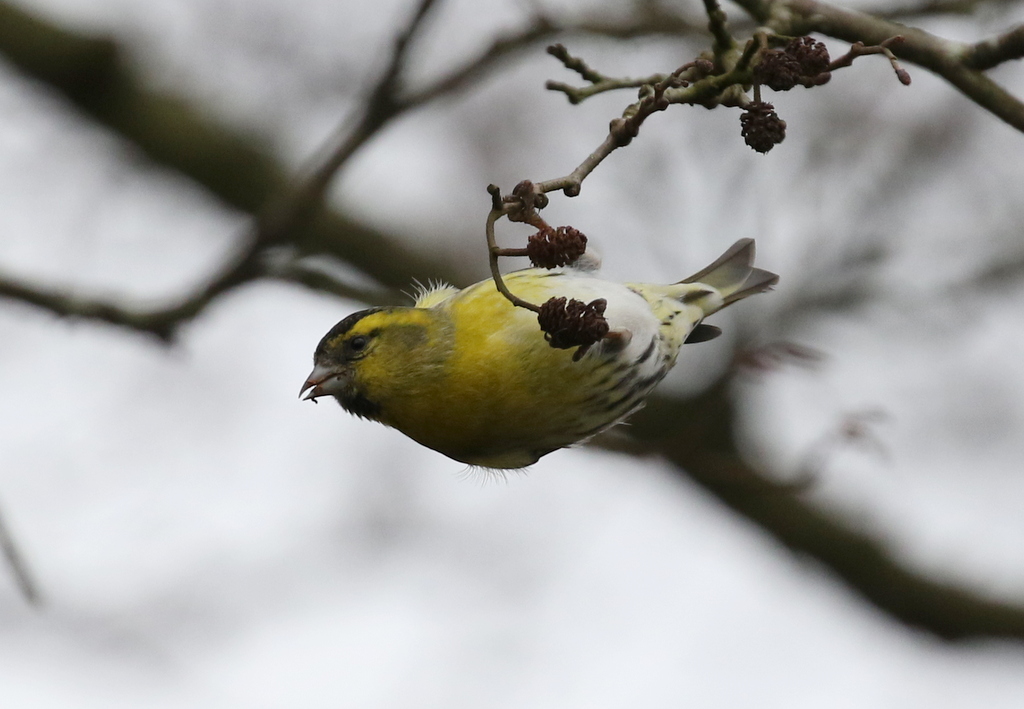
After a while, we had to tear ourselves away from all the activity at the bridge and we made our way down to the paddocks to look for Hawfinches. We walked along to a gap in the hedge and looked over to the hornbeams in the middle where the first bird we spotted was a smart male Hawfinch perched up in the top!
We got the Hawfinch in the scope and had a good look at it. It was picking at the lichen on the branch, turning from side to side, giving us a great view of its huge bill, white tip to the tail and ornate wing feathers. When we heard a Hawfinch calling, we could see it was not the bird we were watching and a scan of the tree revealed a female Hawfinch climbing up through the branches nearby. It came over to join the male and we had the two of them in the scope together, the female noticeably duller grey-brown.

Eventually, the male Hawfinch took off and started to fly over towards us, quickly followed by the female. They turned and headed away strongly south-east, over the pines and away out of view. A quick scan of the grass in the paddocks revealed a Mistle Thrush which flew up and perched nicely on a gate for us to look at it.
We walked back towards the bridge and round by the lake, where a pair of Gadwall were a nice addition to the day’s list. The drakes look rather plain grey and black at first glance, but closer inspection reveals intricate patterning, the connoisseur’s duck! A pair of Canada Geese were feeding on the lawn in front of the hall. When we got back to the bridge, a Great Spotted Woodpecker came down to investigate the seed but flew up into the trees behind when it saw us approaching.
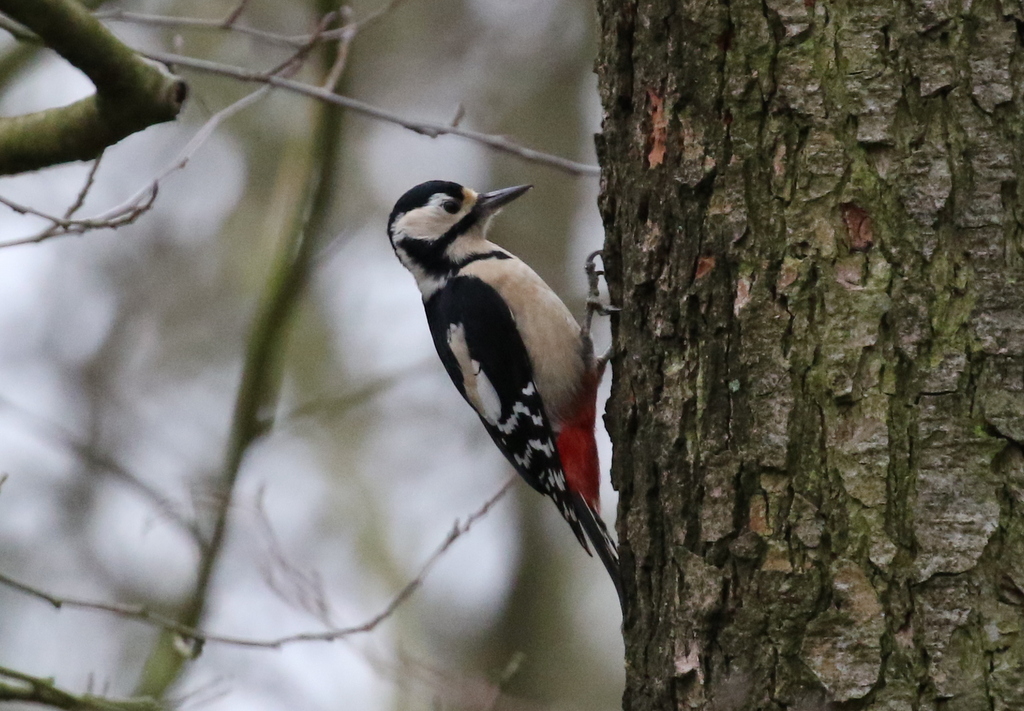
Back in the car park, all we could find this afternoon were a couple of singing Goldcrests, so we made our way down the track beyond to check out the pits. There were not as many duck on here as there have been in recent weeks. A couple of drake Goldeneye disappeared round into one of the bays on the western pit, out of view. As we walked round to the eastern pit, we heard a distinctive call and looked up to see a pair of Mandarin flying past, the first we have been here this year.
The sun was finally starting to show itself just as we were finishing, totally contrary to the forecast which had suggested it would cloud over through the afternoon and may rain later. We stopped to watch a couple of Great Crested Grebes diving out on the water, looking very smart now in their breeding plumage. A male Reed Bunting was singing in the alders nearby – not the most exotic of songs, but it made it feel like spring already.

It was a nice way to end, but unfortunately that meant it was time to head back to the car and finish the day.
















